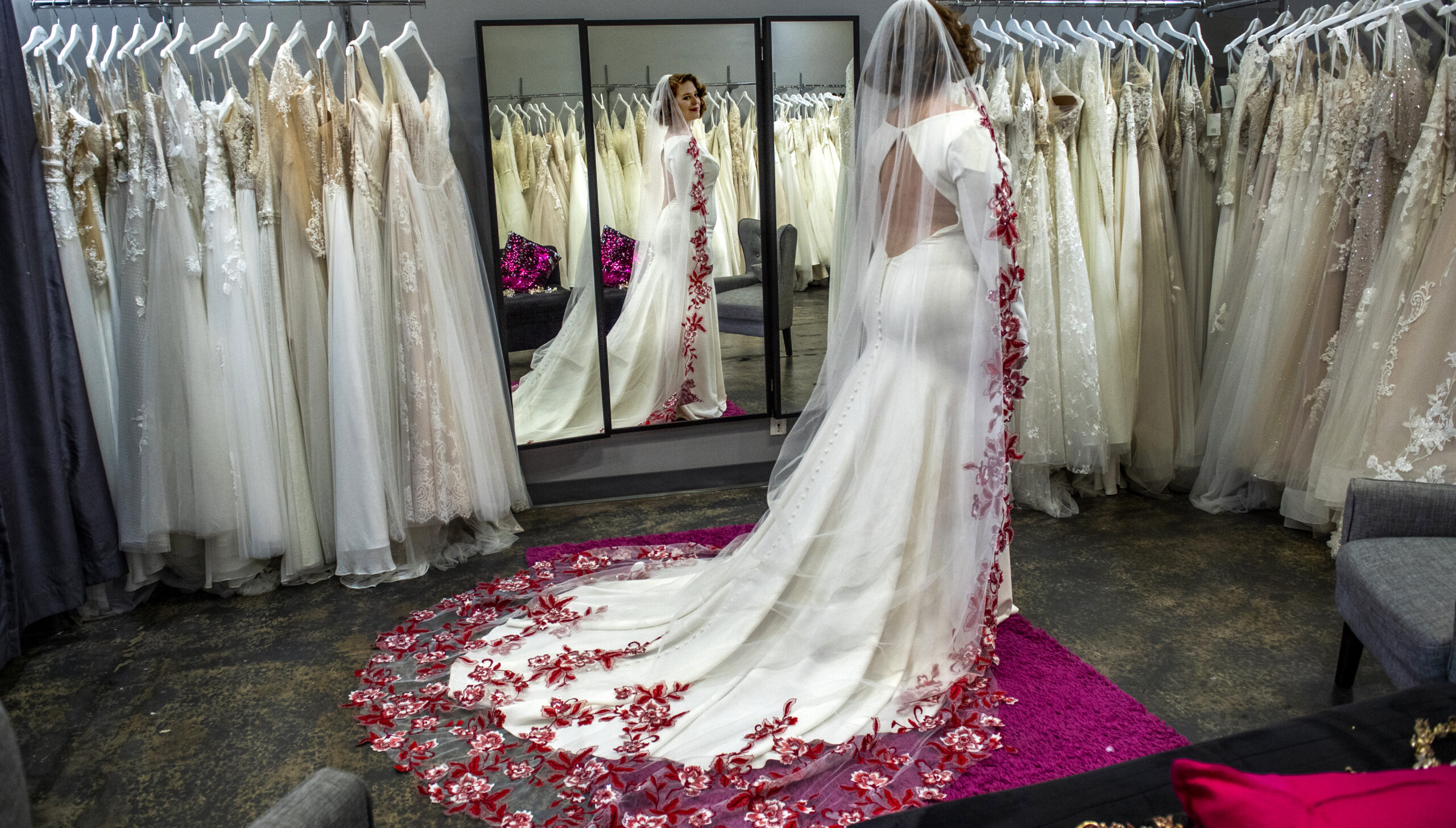
Love doesn’t come cheap, especially in California.
Couples in the state spend an average of $39,000 on their wedding day, according to The Knot Real Wedding Studies, an annual survey of thousands of couples nationwide.
But the pandemic has kept many couples from celebrating their wedding as planned, with some opting for smaller celebrations or postponing them altogether.
A survey, conducted by market research firm The Wedding Report, found that wedding spending dropped significantly in 2020, largely due to restrictions on large gatherings, and is unlikely to return to normal levels until 2024.
Megan Papageorge, a wedding planner and owner of Long Beach-based Sweet Peach Planning, said some of her clients have lost money on deposits they paid to venues that didn’t survive the pandemic. Others have simply reconsidered their priorities and timing over the year-long delay.
“When they were completely focused on the wedding before, now they’re thinking of maybe having a baby or buying a house,” Papageorge said.
As some couples are crunching the numbers on their planned festivities again, vendors are doing the same.
In addition to a year of lost revenue, caterers, event venues and rental companies all returned to a market that presents new challenges, such as labor shortages or supply chain issues.
The price of lumber used to build arches for wedding ceremonies, for example, has increased 300% in just one year, according to market data collected by the National Association of Home Builders.
Caterers and venues have also seen costs rise. Recently, prices for chicken have soared. A national labor shortage means they have to pay higher wages to attract waiters, ushers or bar personnel.
“We have no choice, we have to increase our pricing,” said Sofia Riley, owner of the Long Beach catering company Thank Goodness It’s Sofia. Still, demand hasn’t let up. “Our industry was hit so hard, but now the phones have been ringing off the hook,” Riley said.
High demand itself might also lead to increased prices for services like photography or planning, said Papageorge. A photographer who’s booked one day out of every weekend for the rest of the year might decide to charge higher prices for additional gigs, she explained.
“That’s one thing in the wedding industry that a lot of people don’t understand: Part of what we sell is our availability,” Papageorge said.
In addition to increased hard costs, many planners and vendors have been working with clients throughout the pandemic—clients who had plenty of time to rethink everything, from their choice of hairstyle to their flower arrangements.
Ever-changing regulations to limit the spread of COVID have done their part in keeping planners and vendors busy.
“When there’s a new regulation, we try to reimagine as best as we can,” Papageorge said. “The wedding vendors have been doing a lot of work for free.”
